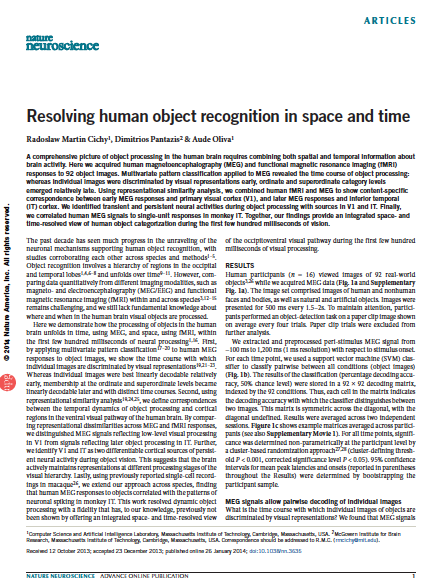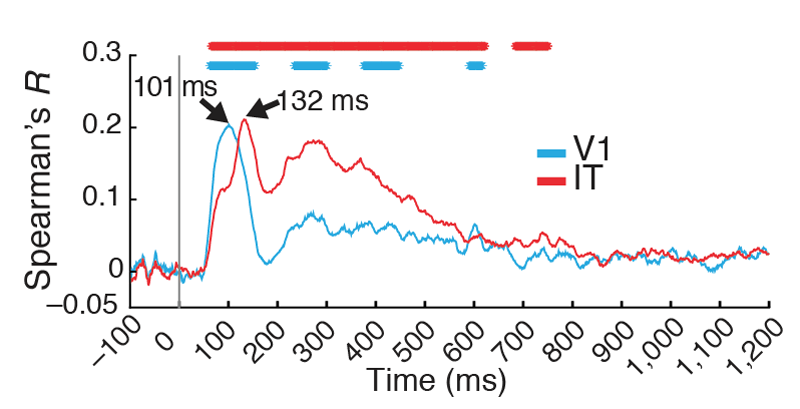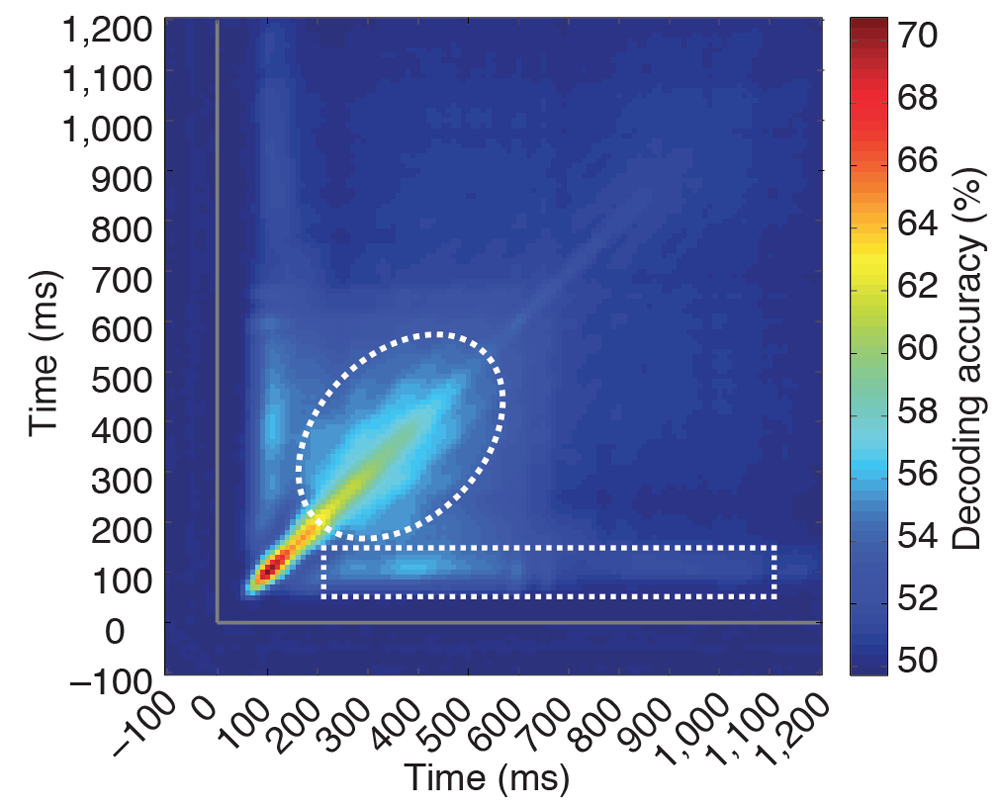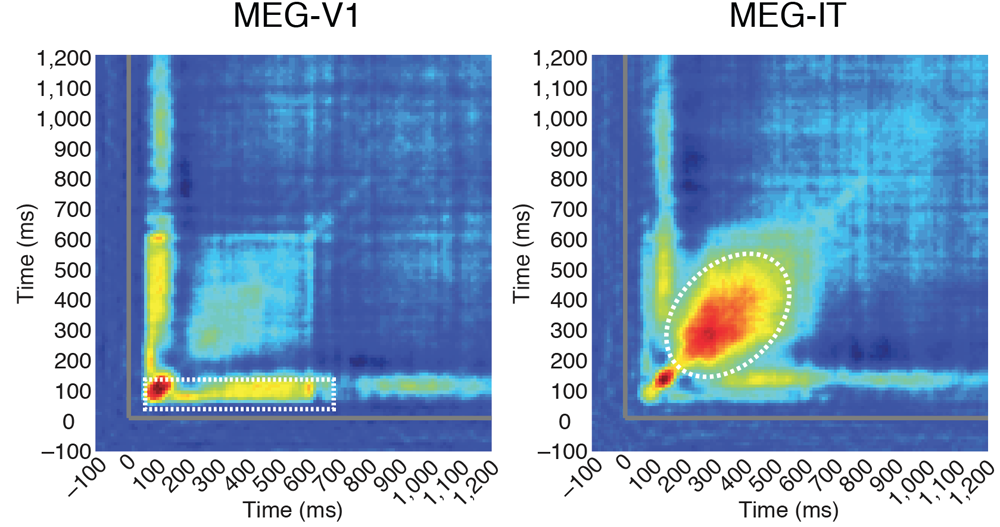Resolving object recognition in space and time
|
|
|
|
|
|
|
|
| Abstract
A comprehensive picture of object processing in the human brain requires combining both spatial and temporal information about brain activity. Here, we acquired human magnetoencephalography (MEG) and functional magnetic resonance imaging (fMRI) responses to 92 object images. Multivariate pattern classification applied to MEG revealed the time course of object processing: whereas individual images were discriminated by visual representations early, ordinate and superordinate category levels emerged relatively later. Using representational similarity analysis, we combined human fMRI and MEG to show content-specific correspondence between early MEG responses and primary visual cortex (V1), and later MEG responses and inferior temporal (IT) cortex. We identified transient and persistent neural activities during object processing with sources in V1 and IT. Finally, human MEG signals were correlated to single-unit responses in monkey IT. Together, our findings provide an integrated space- and time-resolved view of human object categorization during the first few hundred milliseconds of vision. |

[paper][journal link] [supplementary materials] |



